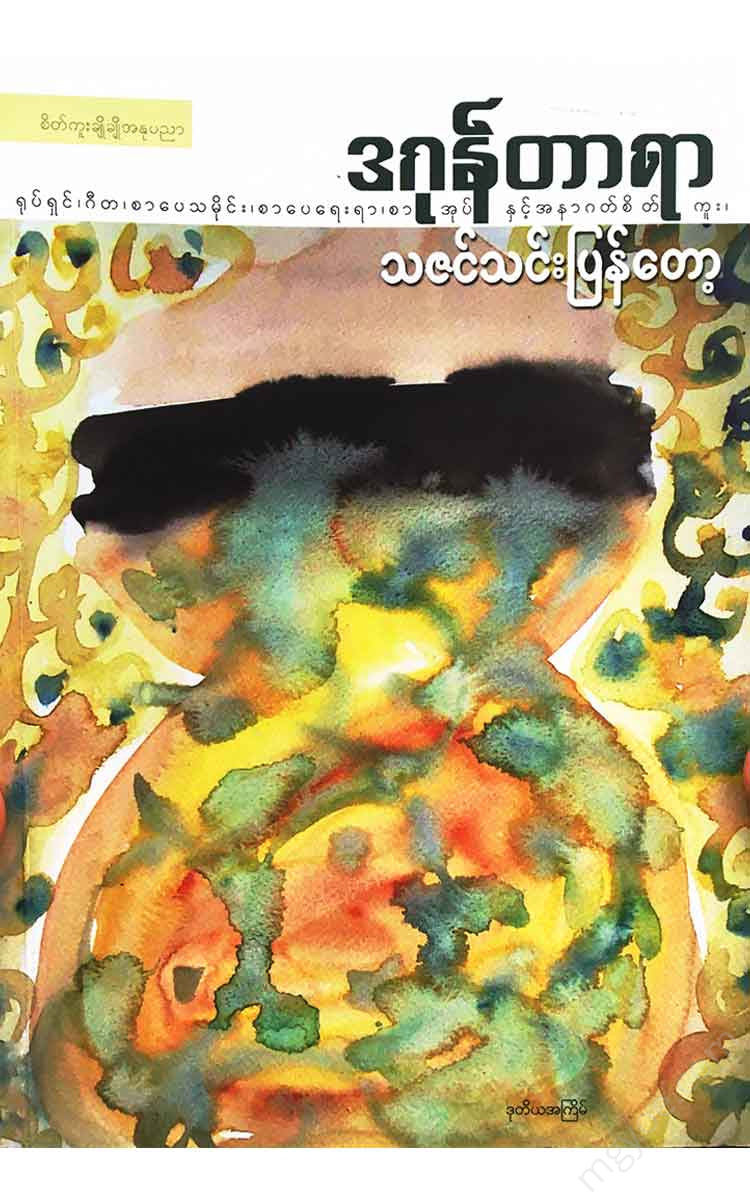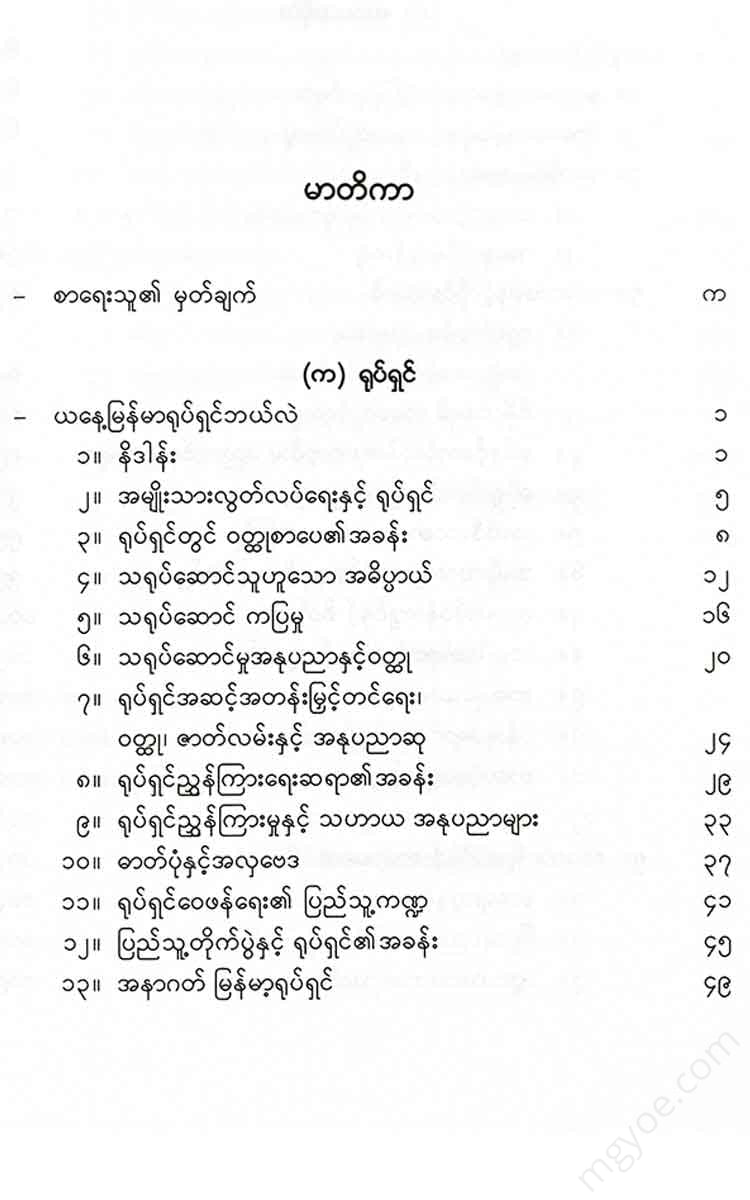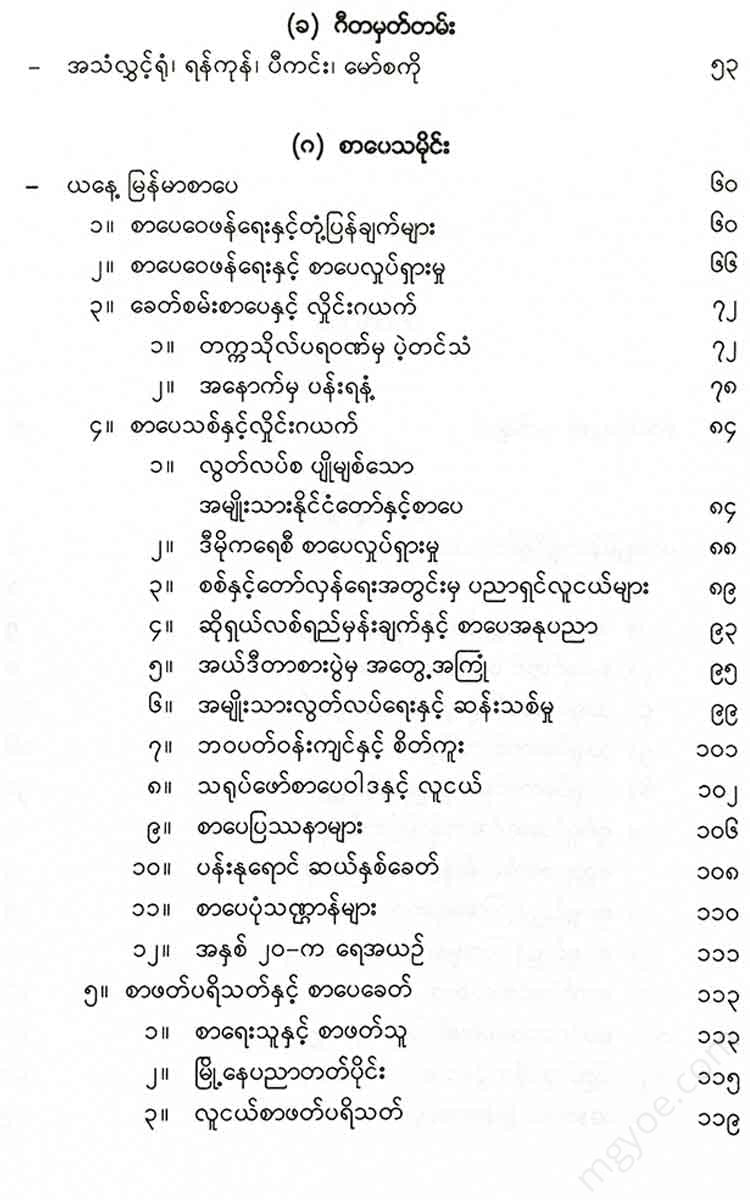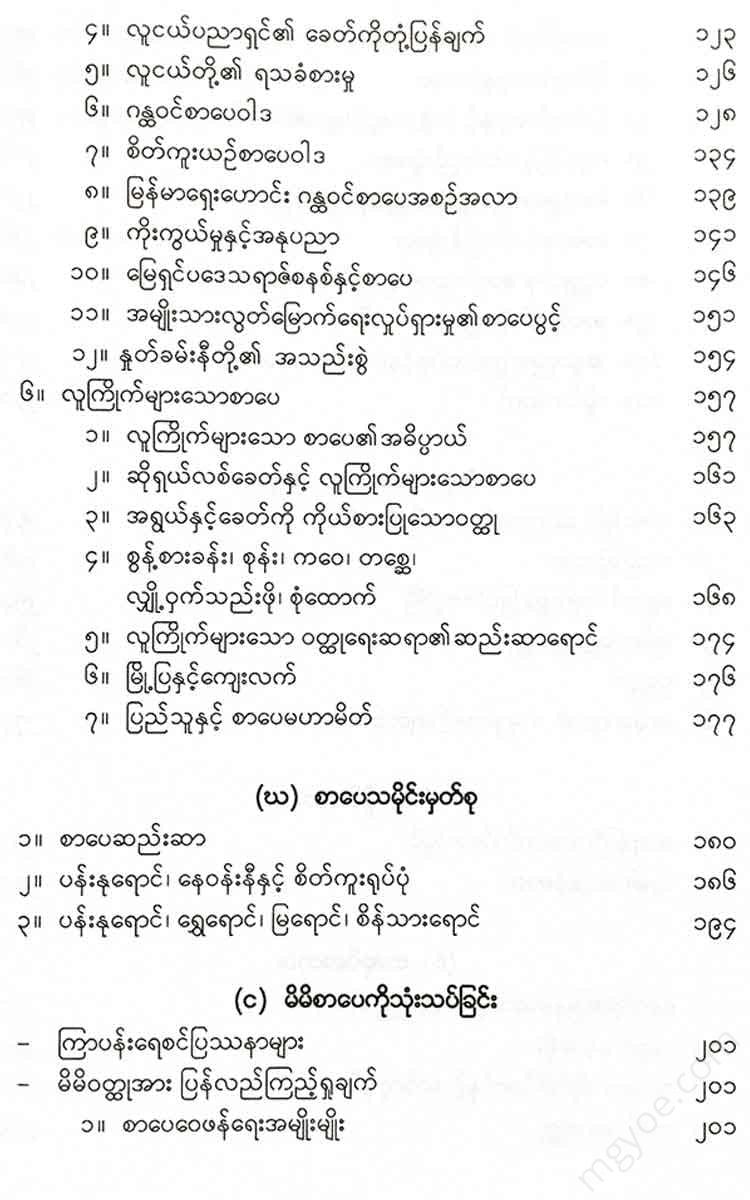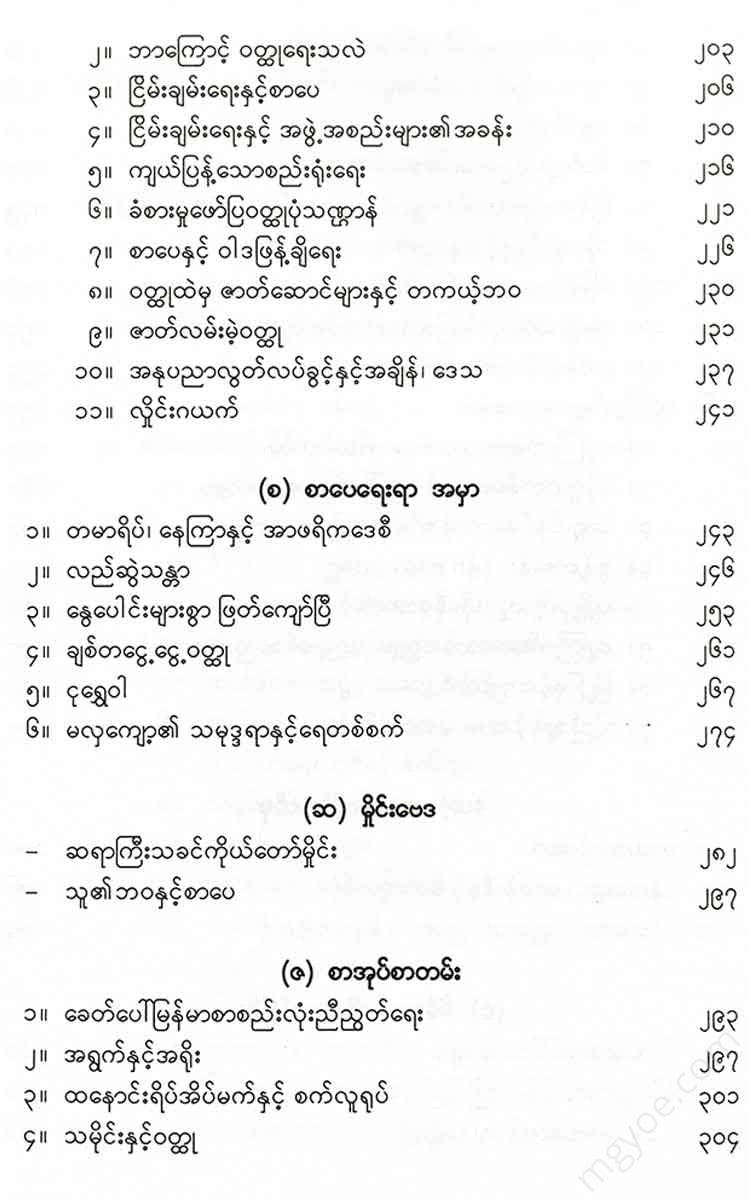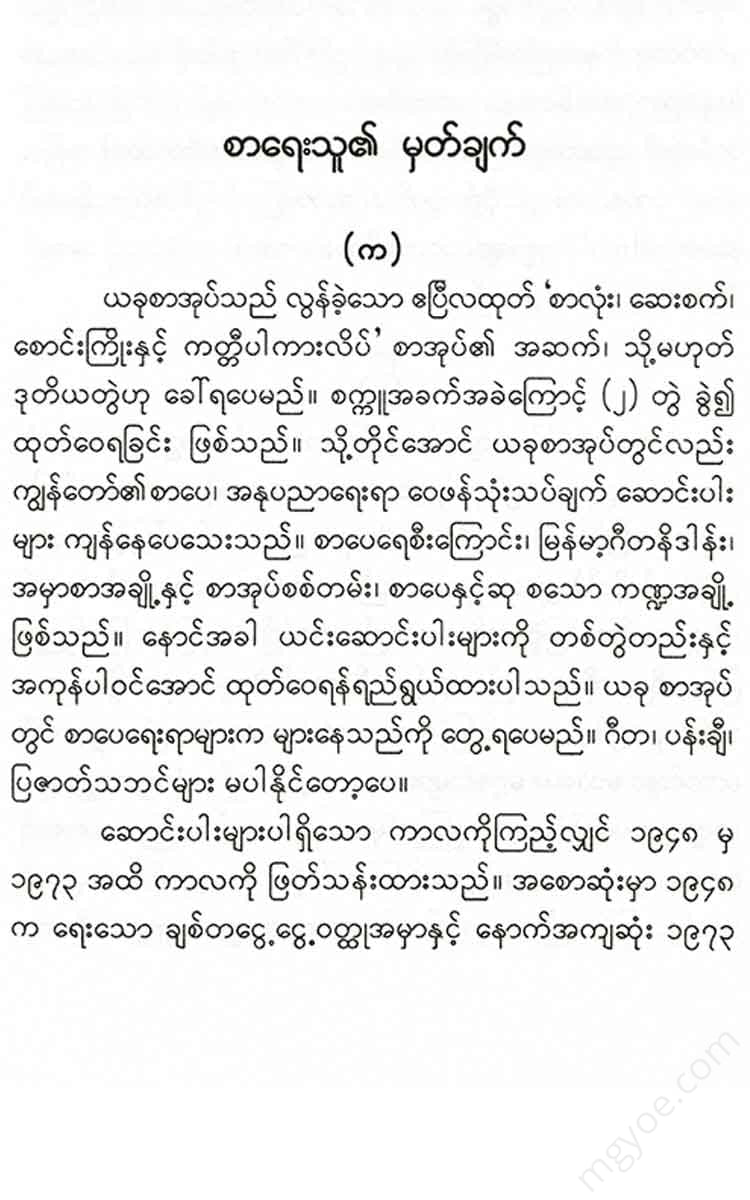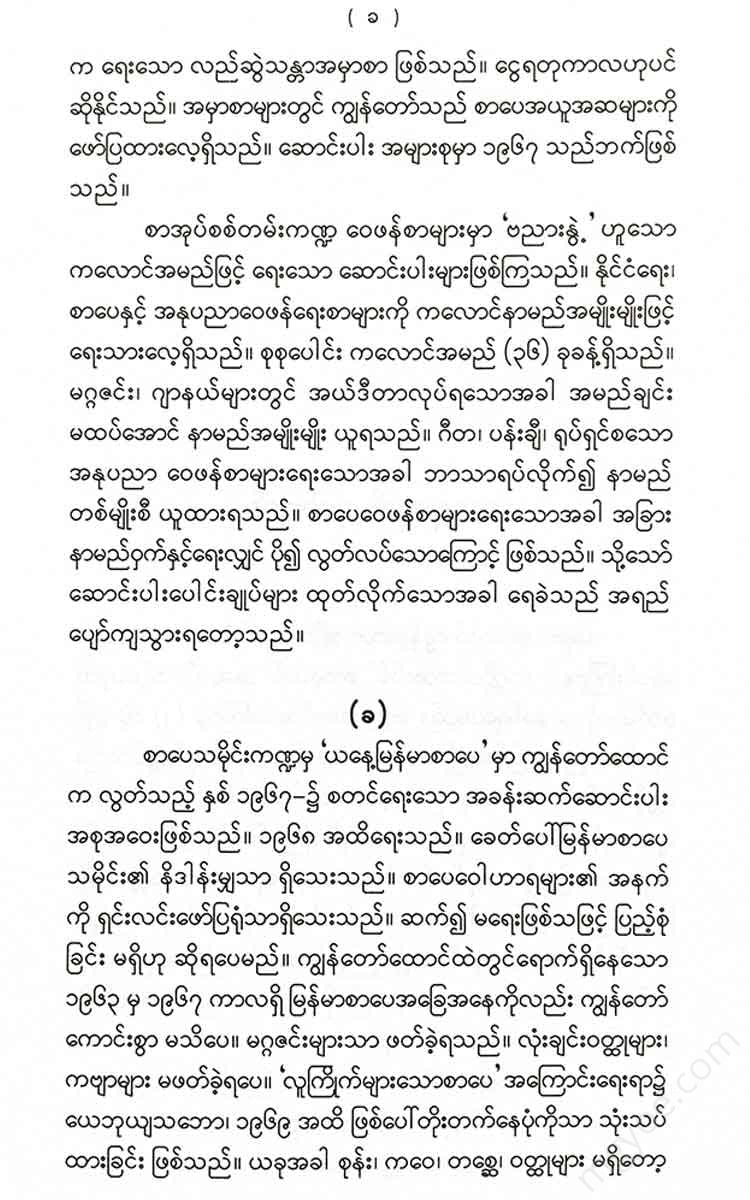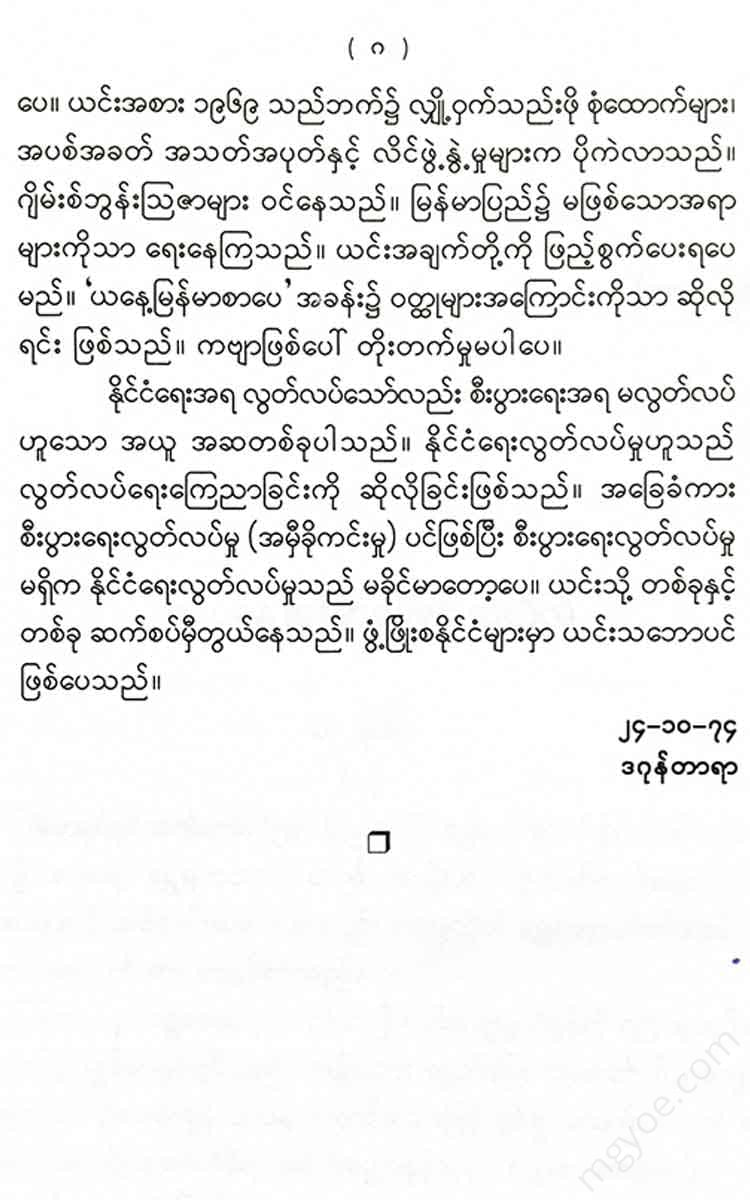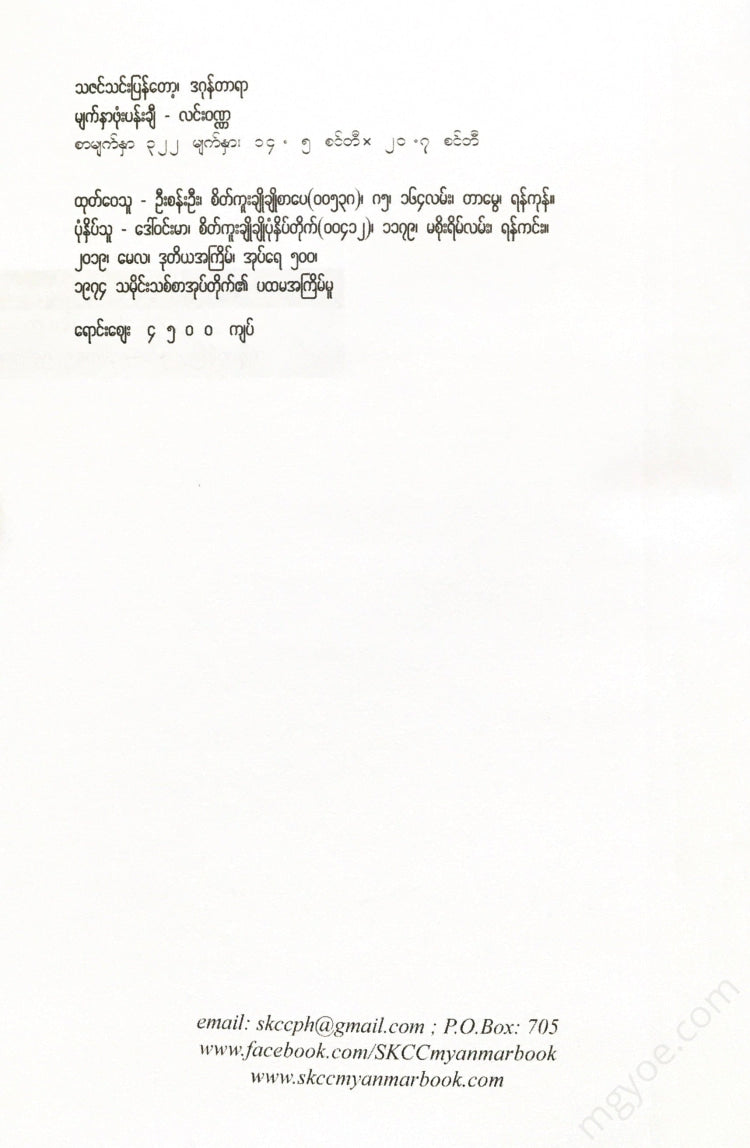စိတ်ကူးချိုချိုစာပေ
Dagontara - Thazin Thin Paeng
Dagontara - Thazin Thin Paeng
Couldn't load pickup availability
Myanmar cinema has completed its 50th anniversary. It has even reached its golden jubilee year. The golden jubilee of the National Day clearly shows the mark of the national liberation struggle. The golden jubilee of the university symbolizes the light of education.
What cultural banner will the Golden Jubilee of Myanmar cinema raise? In fact, Myanmar cinema was born during the national liberation struggle. The film began with the newsreel of U Htun Shein's funeral. Then, it was based on the novel "Love and the Man" by P. Moring. It is a good tradition.
“Bear with the noise and the shaking,” was the slogan that early Burmese moviegoers read on the shaking screen. The industrial side was flawed due to the colonial era. For over 30 years, silent films were made.
It has been 23 years since independence was declared. We have gone through historical periods such as the British era, the Japanese era, and the post-independence era. Has Burmese cinema developed?
( 2 )
Burmese cinema has gone through ages. The two periods of Burmese cinema were when Burma was a semi-feudal country and a subordinate colony, so its ideology was feudal and its industry was shaky. Bo Hein and Bo Wa were popular. They were a reflection of the old feudal era, the ideology of heroism and the ideology of Bo Min. When the Bo films competed, one of them became the “Bo Taku King” and the Bo era ended. Mya Ta Bek and Mya Aye Yin were popular, historical films that depicted life, changed the era, and inspired people. This was a reflection of the national liberation movement during the colonial era. Isn’t culture a reflection of politics?
Independence in 1948. However, the ruling party did not establish an independent economic system, but established a democratic socialist economic system (or capitalist reform system) that relied on the imperialists to patch up capitalism, and Burma was not free from colonial heritage. This is a sign that the national liberation period was not over. On the other hand, the emerging capitalists tried to develop the national economy. Some capital flowed into the film industry. Film producers began to emerge. New film directors, new actors and actresses, and new characters also emerged. The tradition of buying and filming novels by famous writers flourished.
The capitalist does what he has to do to grow his business. If people like his products, won't his business expand? But he may be interested in the growth of his business only in terms of the future.
( 3 )
Today, the film industry is still basically a small-scale capitalist economy. However, the state government controls the artistic and production aspects, such as script review, purchasing of film stock and film equipment, publicizing theaters, and purchasing vehicles. It is a capitalist industry with limited control. The Film Council is an organization of producers, artists, professionals, and film workers. It is also a liaison body between the state government and the film industry.
Therefore, it can be said that the development of Myanmar cinema today lies jointly with the producers and the national government.
Cars are still being shot with old colonial-era cameras. There are still criticisms about the lack of sound recording, the sound of crows, etc. In terms of art, there is also a lack of systematic instruction from directors. There are still few stories that depict the era.
The emergence of modern industry, modern film schools, and active film critics should be discussed during the film's golden jubilee.
Due to the current car rental policy, manufacturers are still hesitant to produce more cars.
Today, the state government receives 20 percent of the revenue from the film industry, royalties from producers and artists, theater fees, and rental fees. If there is no incentive for producers to regulate the film industry, the production of films will decrease. Or will the state government produce films?
Which path will lead to the advancement of film art and skills?
